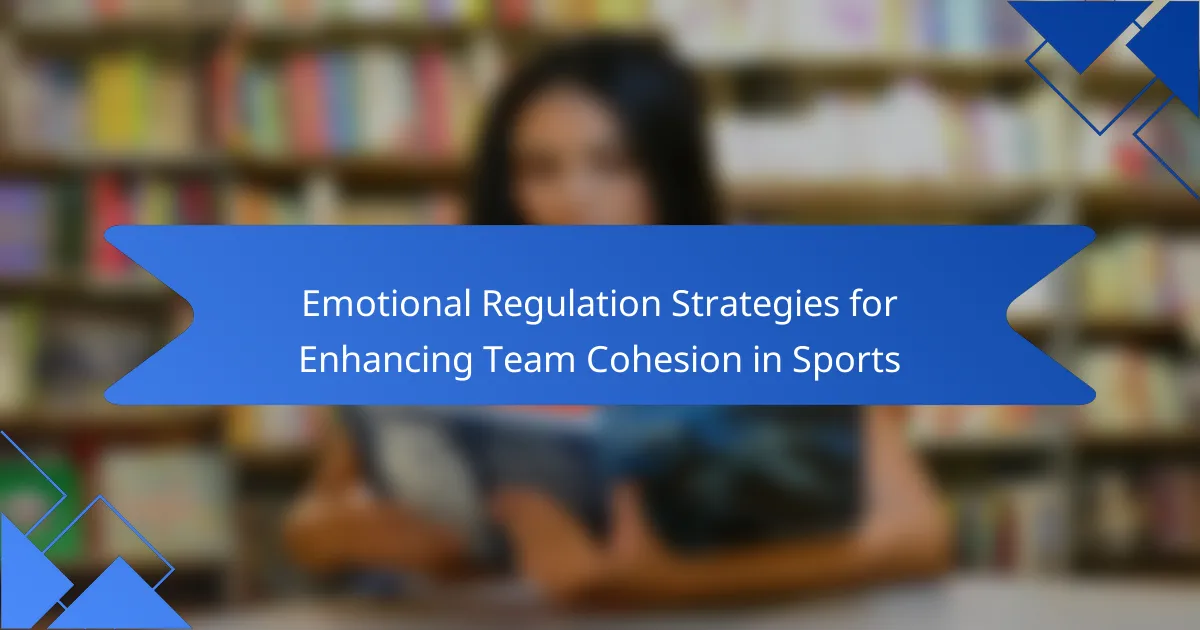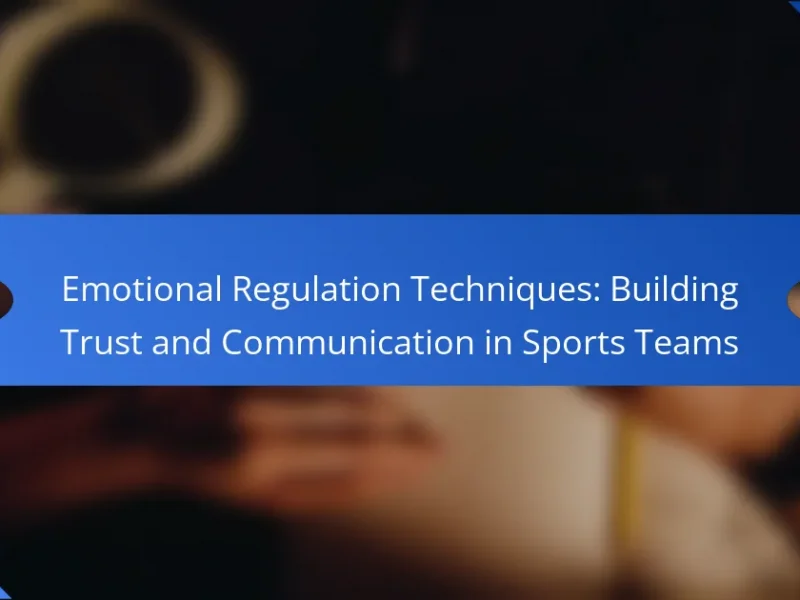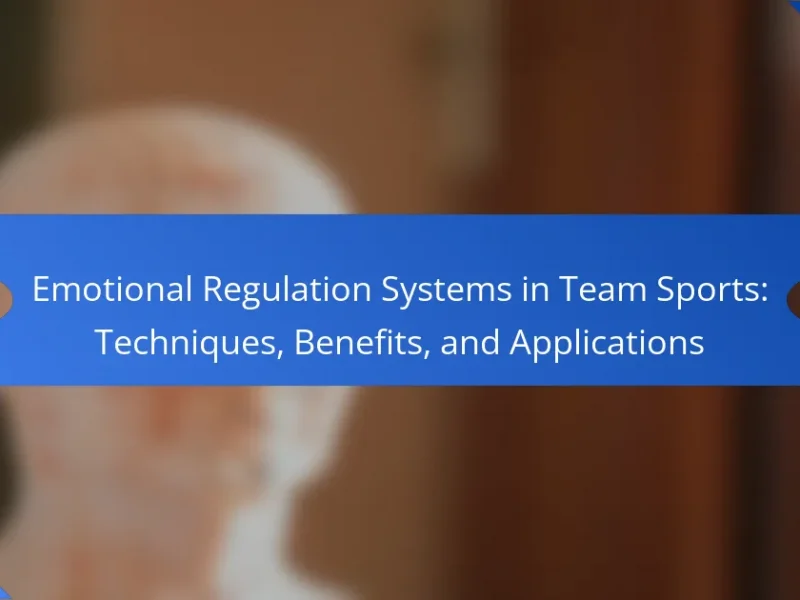Enhancing team cohesion in sports is essential for optimal performance and satisfaction. Emotional regulation strategies foster effective communication and conflict resolution. Techniques like mindfulness and cognitive restructuring help athletes manage emotions. Regular emotional check-ins further strengthen team dynamics and resilience.
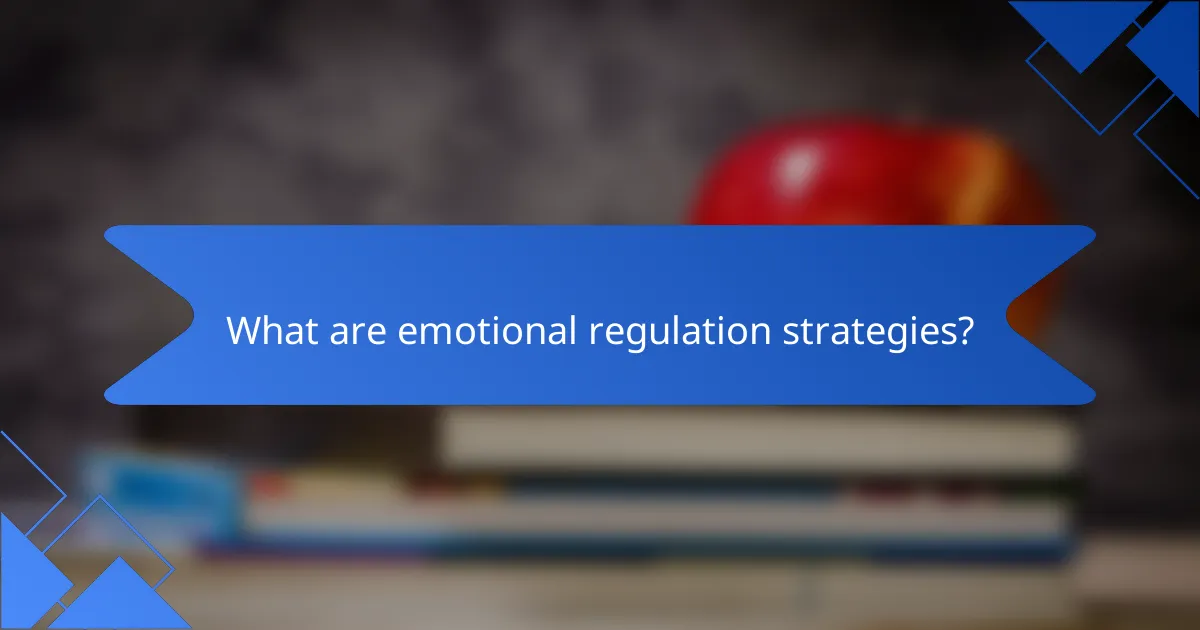
What are emotional regulation strategies?
Emotional regulation strategies enhance team cohesion in sports by fostering effective communication and conflict resolution. Techniques such as mindfulness, cognitive restructuring, and emotional expression help athletes manage their emotions, leading to improved performance and collaboration. Research shows that teams employing these strategies report higher satisfaction and stronger interpersonal relationships. Implementing regular emotional check-ins can further strengthen team dynamics and resilience.
How do emotional regulation strategies impact team dynamics?
Emotional regulation strategies significantly enhance team dynamics by fostering cohesion and communication. These strategies help athletes manage stress and conflict, leading to improved collaboration. For instance, techniques like mindfulness and cognitive restructuring can reduce negative emotions, promoting a supportive environment. As a result, teams experience better performance and stronger relationships, essential for success in sports.
What role does emotional intelligence play in sports teams?
Emotional intelligence significantly enhances team cohesion in sports by fostering better communication and understanding among team members. It allows athletes to manage their emotions effectively, leading to improved collaboration and trust. Teams with high emotional intelligence can navigate conflicts more efficiently, resulting in a more supportive environment. This emotional regulation contributes to higher performance levels and overall team success.
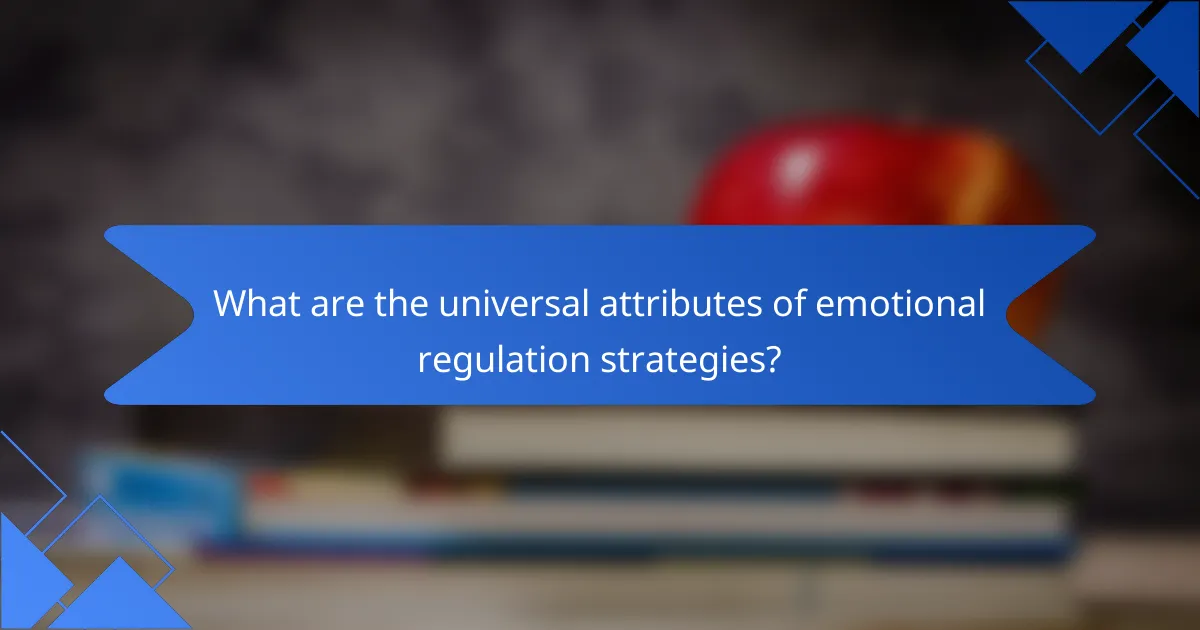
What are the universal attributes of emotional regulation strategies?
Emotional regulation strategies universally aim to manage emotional responses effectively. Key attributes include awareness of emotions, cognitive reappraisal, and the ability to implement coping mechanisms. These strategies enhance team cohesion by fostering communication, reducing conflicts, and promoting a positive atmosphere. Research indicates that teams employing these strategies exhibit improved performance and collaboration.
How can active listening enhance team cohesion?
Active listening significantly enhances team cohesion by fostering trust and understanding among members. It allows individuals to express their thoughts and feelings openly, which promotes emotional regulation. When team members feel heard, they are more likely to engage positively, leading to a collaborative atmosphere. This practice also reduces misunderstandings, as clarifying questions and reflective responses demonstrate respect for differing perspectives. As a result, active listening serves as a foundation for stronger interpersonal relationships, ultimately enhancing overall team performance in sports.
What techniques promote self-awareness among team members?
Emotional regulation strategies enhance self-awareness among team members through techniques like mindfulness, reflective practices, and open communication. Mindfulness encourages present-moment awareness, helping individuals recognize their emotions. Reflective practices, such as journaling, promote self-examination of thoughts and feelings. Open communication fosters a safe environment for sharing emotions, leading to greater understanding and cohesion. These techniques collectively build a foundation for improved emotional intelligence within the team.
How does effective communication contribute to emotional regulation?
Effective communication enhances emotional regulation by fostering trust and understanding among team members. This leads to better conflict resolution and reduced anxiety. When athletes communicate openly, they can express emotions constructively, promoting a supportive environment. As a result, emotional stability increases, contributing to overall team cohesion.
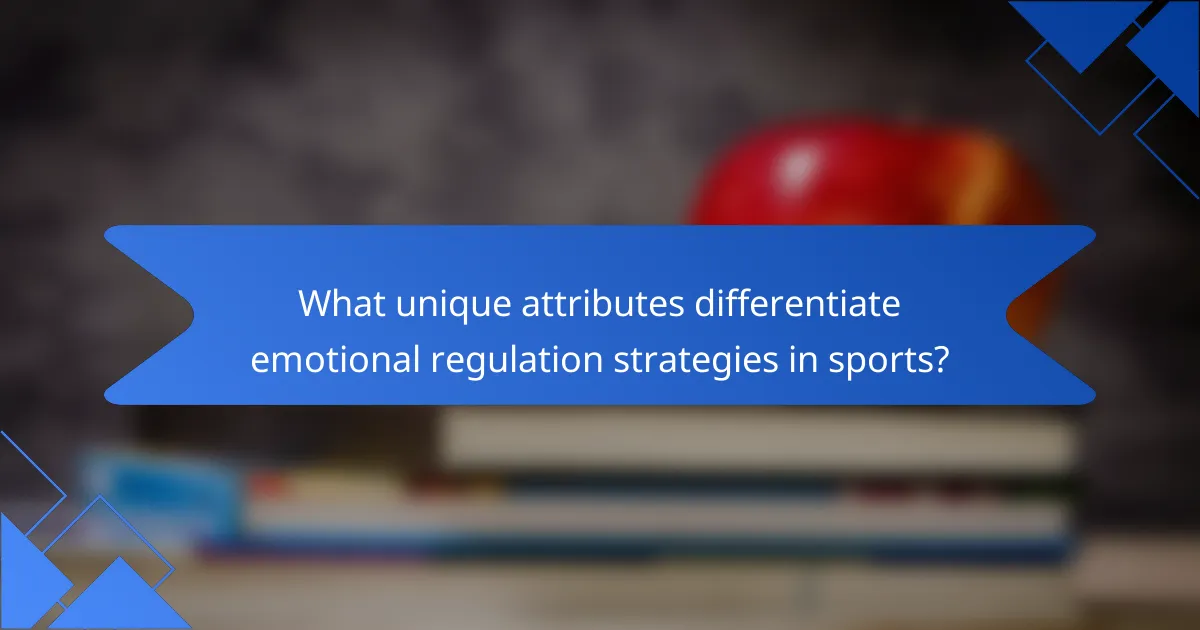
What unique attributes differentiate emotional regulation strategies in sports?
Emotional regulation strategies in sports are differentiated by their focus on team dynamics and individual emotional responses. Unique attributes include the integration of mindfulness techniques, which enhance self-awareness and collective empathy, and the use of cognitive restructuring to shift negative thoughts into positive ones. These strategies foster resilience and improve communication, ultimately strengthening team cohesion. Rare attributes may involve tailored approaches based on team culture and specific sport dynamics, ensuring relevance and effectiveness.
How do specific strategies vary across different sports?
Emotional regulation strategies vary significantly across different sports, influenced by team dynamics and competitive environments. In team sports like football, strategies may focus on collective emotional awareness to enhance cohesion. In contrast, individual sports like tennis might emphasize personal emotional control to maintain focus. Strategies often include mindfulness practices, communication techniques, and structured routines tailored to the specific demands of each sport. Understanding these variations helps coaches implement effective emotional regulation techniques that foster team unity and performance.
What role does leadership style play in emotional regulation?
Leadership style significantly influences emotional regulation within sports teams. Effective leaders foster a supportive environment that enhances team cohesion. They model emotional awareness and encourage open communication, allowing team members to express feelings constructively. Research indicates that transformational leadership, characterized by inspiration and motivation, promotes positive emotional regulation strategies among athletes. This approach leads to improved performance and stronger interpersonal relationships. As a result, teams exhibit higher resilience and adaptability in high-pressure situations, reinforcing the importance of leadership style in emotional dynamics.
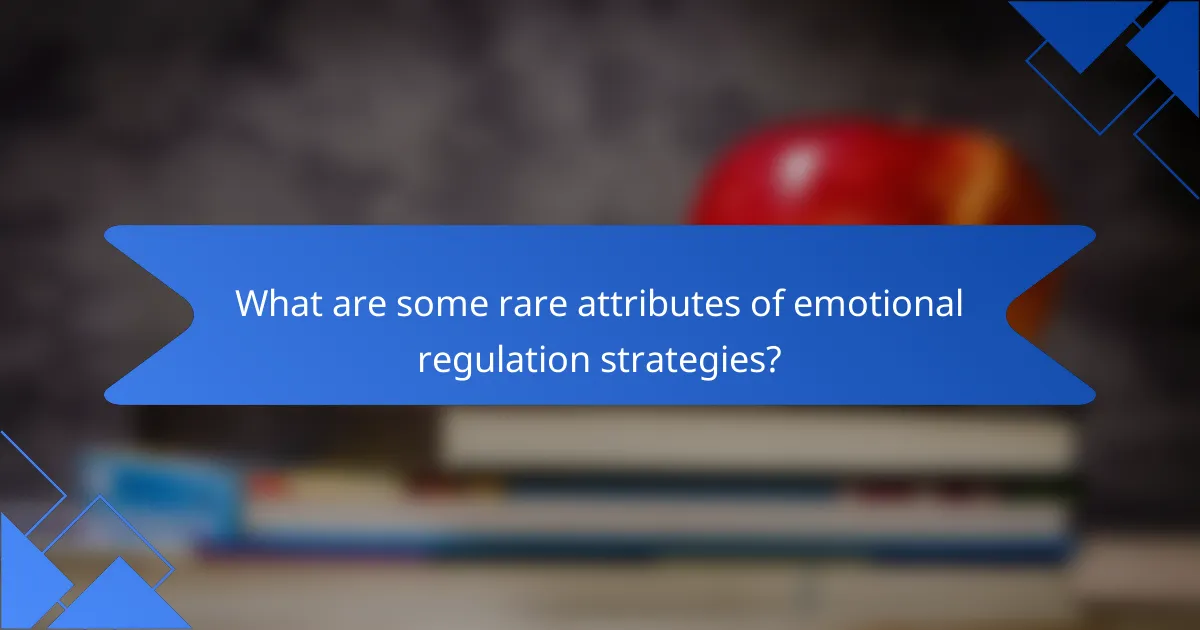
What are some rare attributes of emotional regulation strategies?
Emotional regulation strategies can possess rare attributes that enhance team cohesion in sports. One rare attribute is the use of mindfulness techniques tailored specifically for team dynamics, fostering deeper connections among players. Another is the integration of biofeedback mechanisms to enhance emotional awareness and regulation, which can be uniquely effective in high-pressure situations. Additionally, cross-cultural emotional intelligence training can be a rare attribute, promoting understanding and empathy in diverse teams. These attributes can significantly improve communication and collaboration, ultimately enhancing team performance.
How can cultural differences influence emotional regulation in teams?
Cultural differences significantly influence emotional regulation in teams by shaping communication styles and conflict resolution approaches. Teams with diverse backgrounds may experience varying emotional expressions and interpretations. Understanding these differences fosters empathy and enhances cohesion. For example, teams that embrace cultural diversity can leverage unique emotional strengths, leading to improved collaboration and performance.
What are the impacts of high-pressure situations on emotional regulation?
High-pressure situations can significantly challenge emotional regulation, impacting team cohesion in sports. Athletes often experience heightened stress, which may lead to impulsive reactions or impaired decision-making. Effective emotional regulation strategies, such as mindfulness and deep breathing, can enhance focus and composure under pressure, fostering a supportive team environment. Training in these techniques can improve overall performance and strengthen team dynamics, ultimately leading to better outcomes in competitive settings.
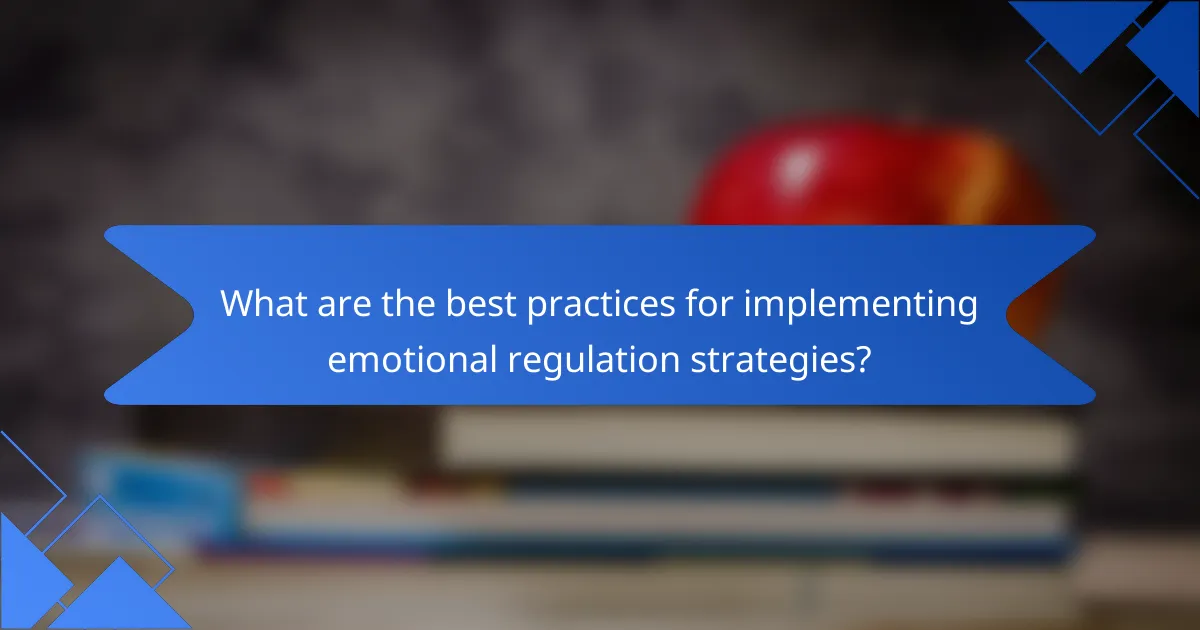
What are the best practices for implementing emotional regulation strategies?
To implement emotional regulation strategies effectively, focus on open communication and team-building activities. Encourage athletes to express emotions constructively, which fosters trust and cohesion. Utilize techniques like mindfulness and breathing exercises to manage stress during competitions. Regular feedback sessions can help identify emotional triggers and promote resilience.
How can coaches foster a supportive environment for emotional expression?
Coaches can foster a supportive environment for emotional expression by encouraging open communication and active listening. They should create safe spaces for athletes to share feelings without judgment. Establishing regular check-ins promotes trust and emotional awareness. Training in emotional regulation techniques enhances team cohesion and resilience.
What common mistakes should teams avoid when applying these strategies?
Teams should avoid common mistakes like lack of communication, neglecting individual emotions, and failing to establish clear goals. These errors can hinder emotional regulation and weaken team cohesion. Additionally, overlooking the importance of feedback and not practicing strategies regularly can lead to ineffective implementation. Lastly, ignoring team dynamics can create misunderstandings and conflict, reducing overall performance.
How can teams measure the effectiveness of their emotional regulation strategies?
Teams can measure the effectiveness of their emotional regulation strategies by assessing changes in performance, communication, and conflict resolution. Regular feedback sessions can reveal team dynamics and emotional climate. Additionally, tracking individual and collective emotional responses during high-pressure situations provides insights into the efficacy of these strategies. Surveys and self-assessments can quantify emotional awareness and regulation skills, allowing for targeted improvements.
What expert insights can help improve team cohesion through emotional regulation?
Emotional regulation strategies enhance team cohesion by fostering mutual understanding and trust. Techniques such as active listening, empathy training, and conflict resolution are vital. For instance, implementing regular check-ins allows team members to express emotions constructively, strengthening relationships. Research shows that teams practicing emotional regulation experience a 20% increase in collaboration effectiveness. Additionally, mindfulness exercises can reduce stress, leading to improved group dynamics. Adopting these strategies creates a supportive environment, promoting resilience and unity among team members.
